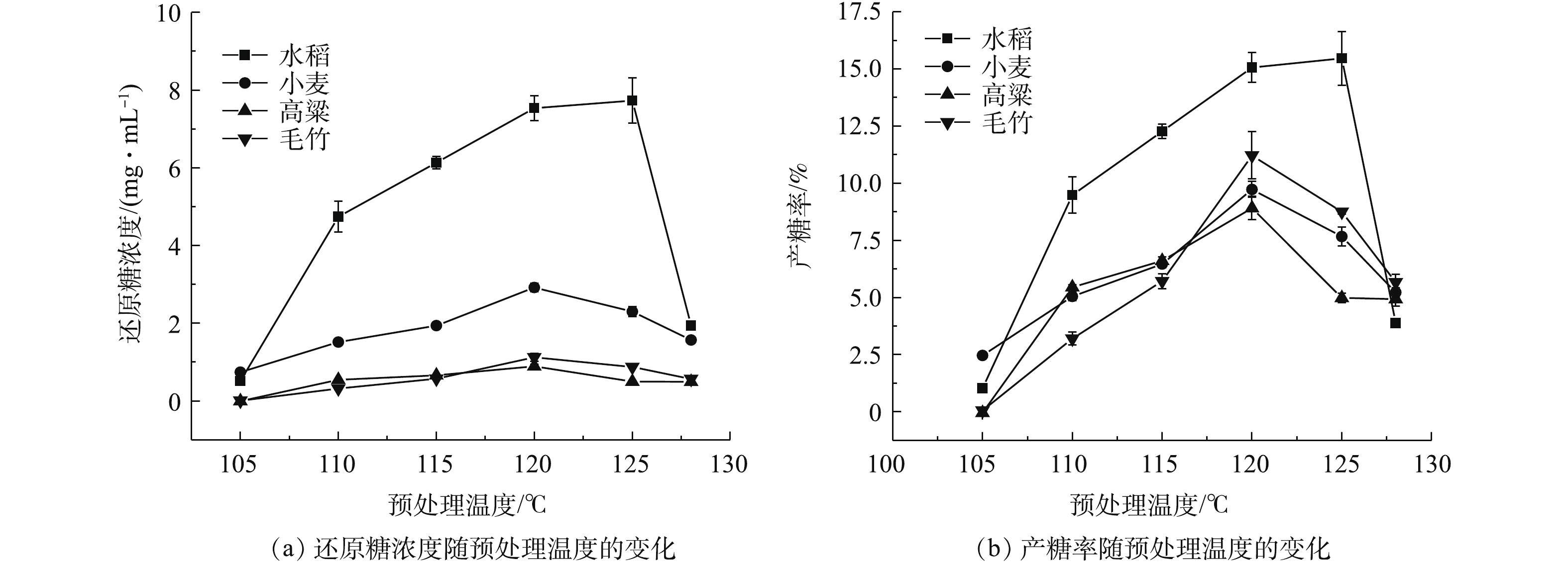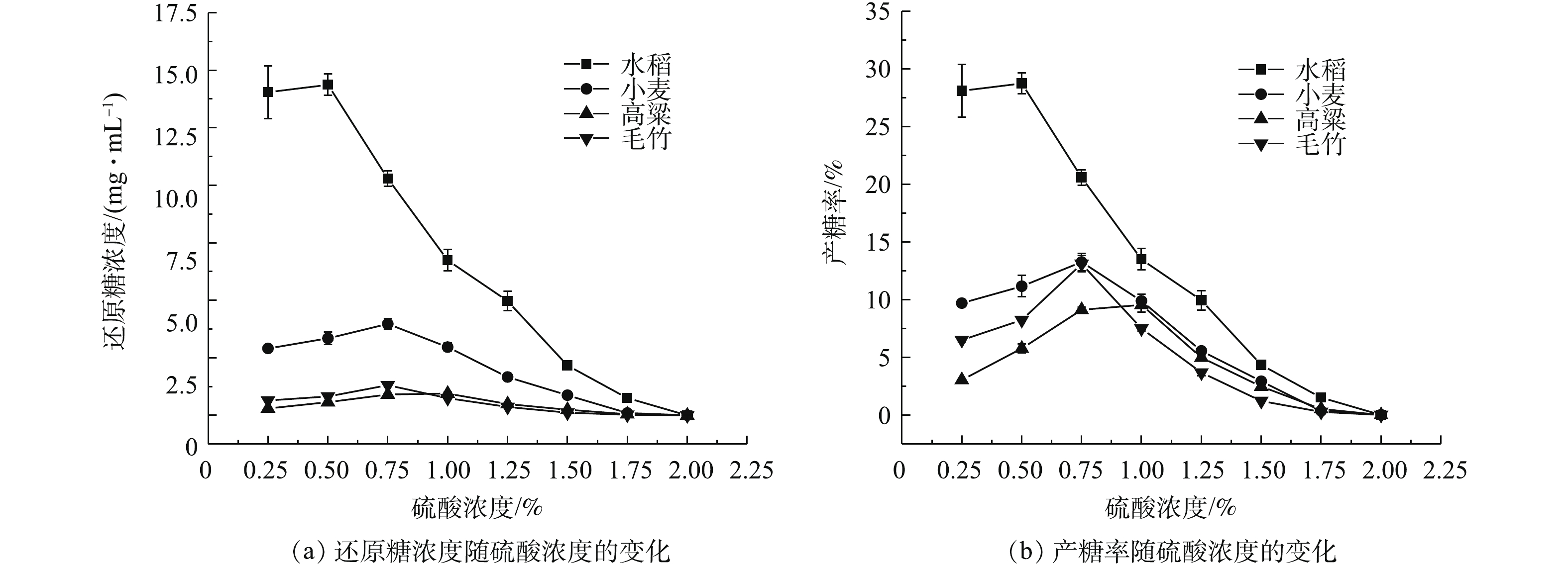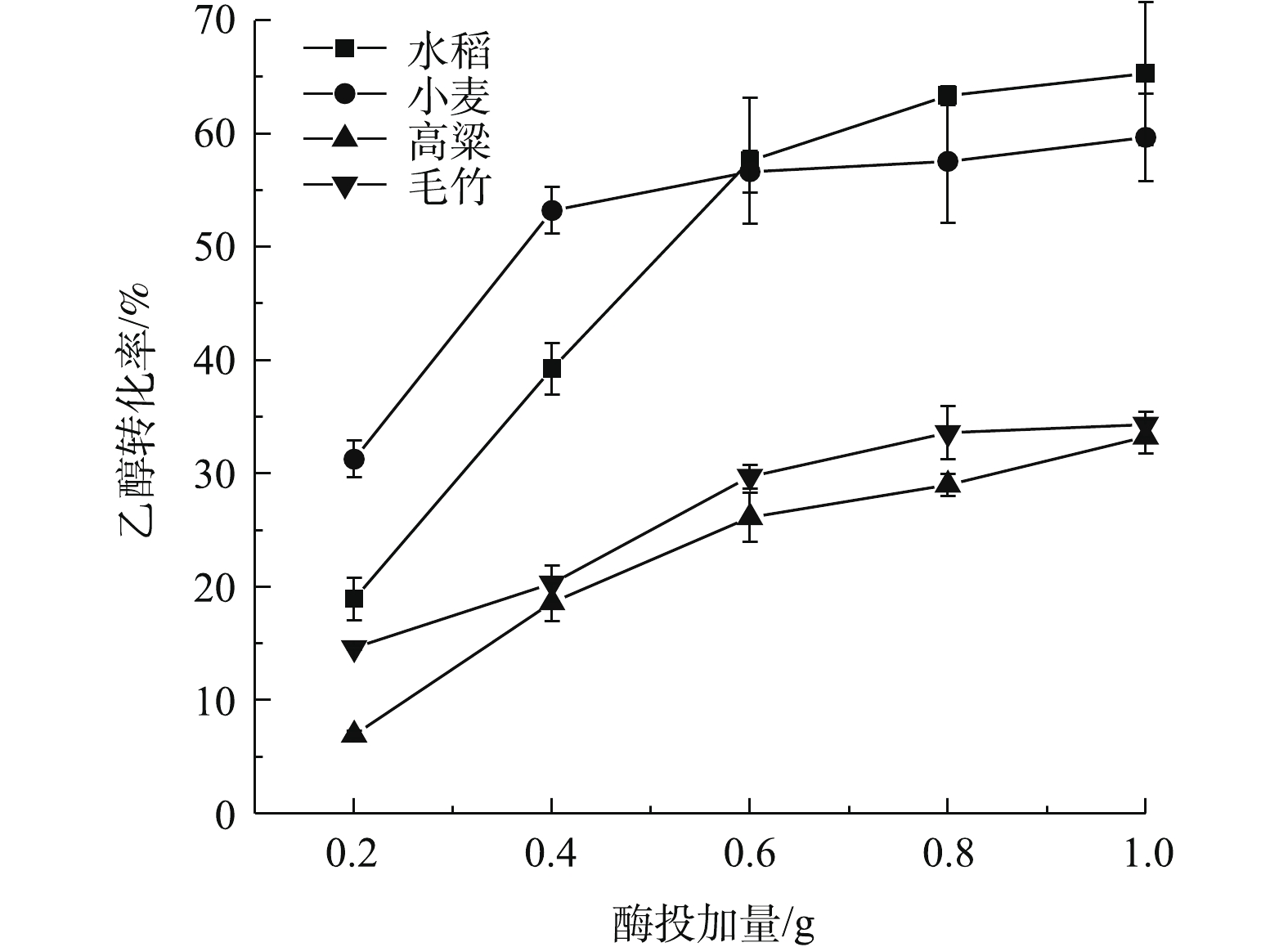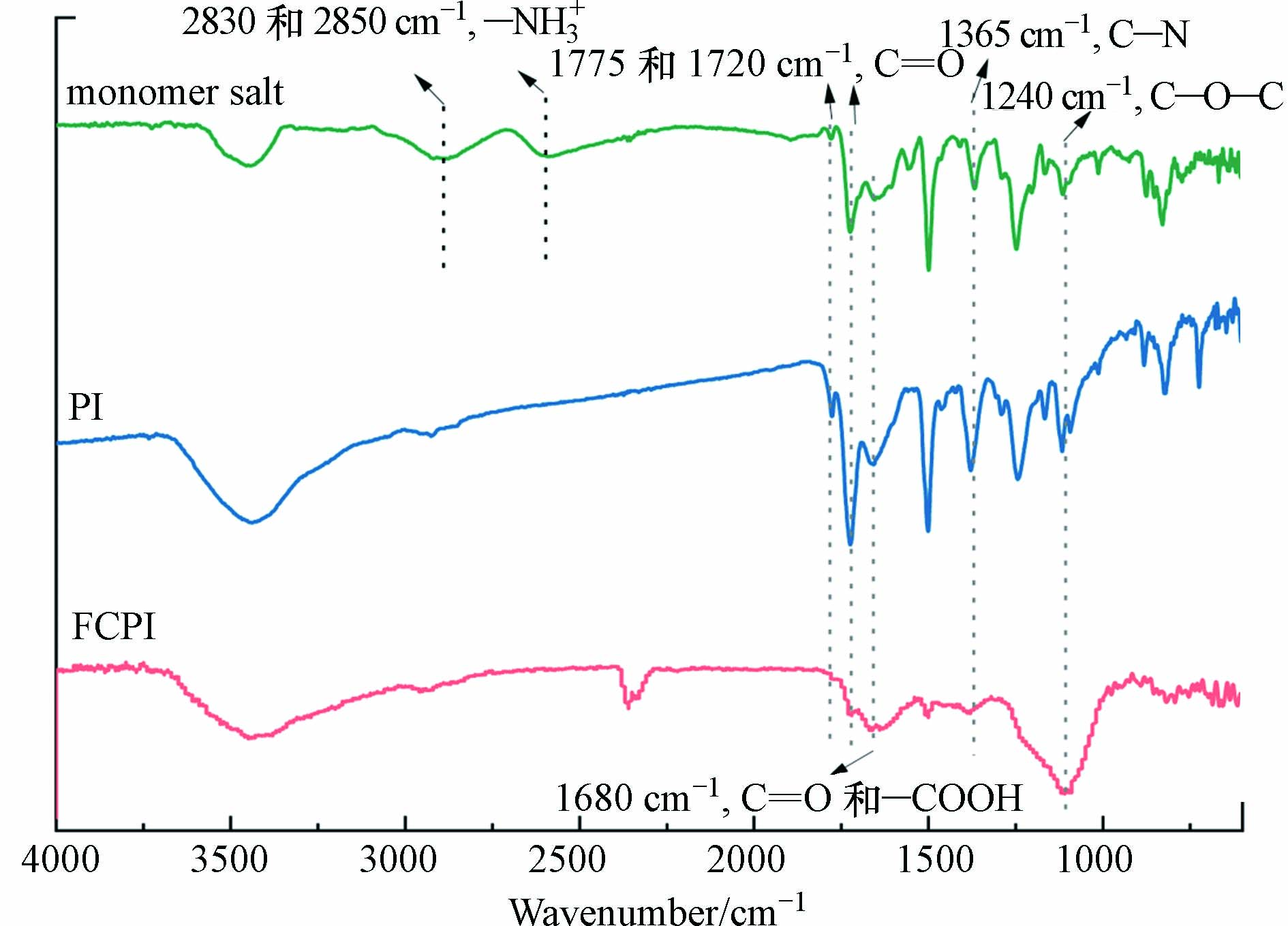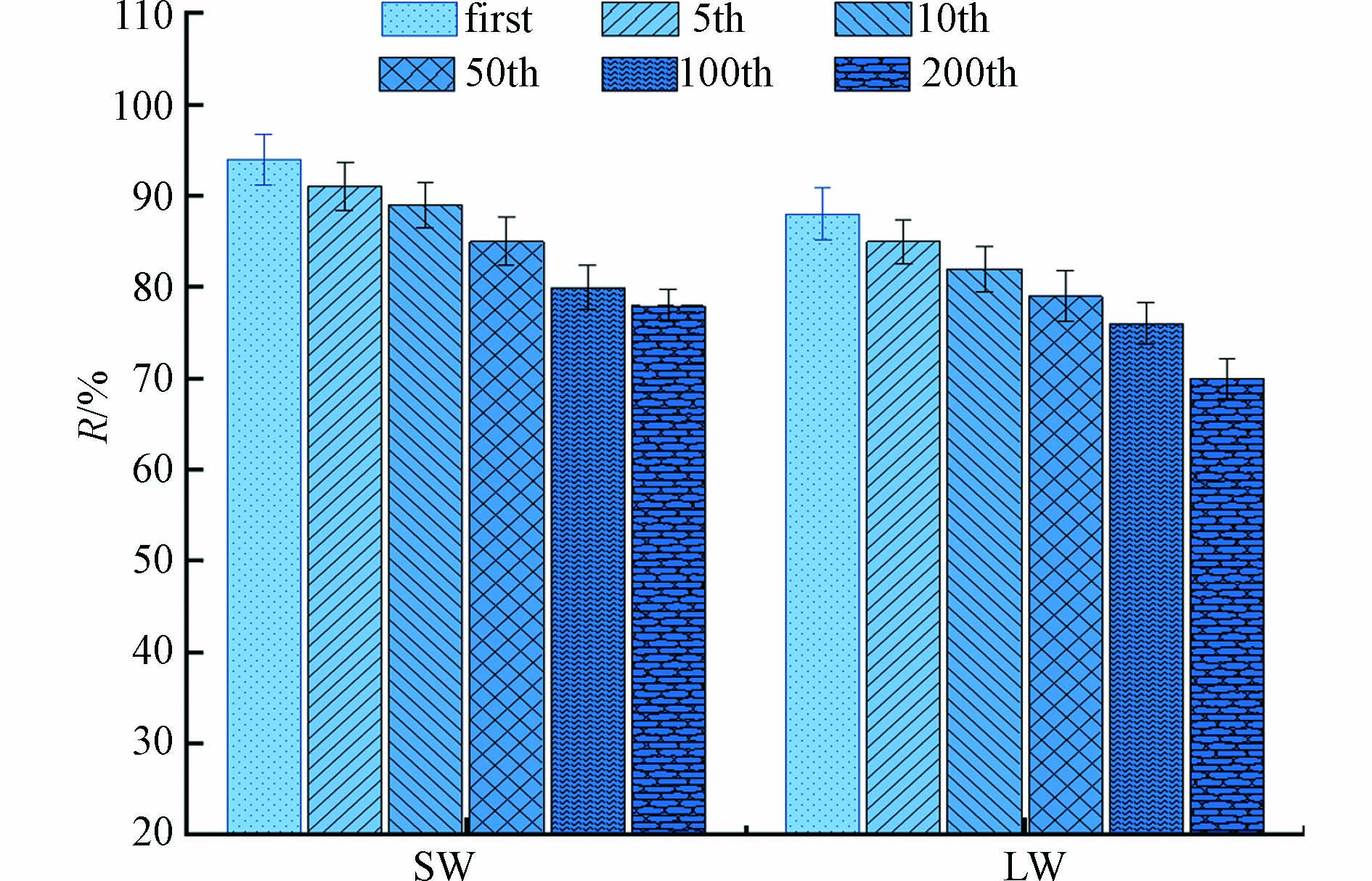-
中国是全球最大的抗生素生产国和消费国,2020年中国使用的全部抗菌药总量约为32776.30吨[1]. 四环素(Tetracycline,TC)占抗生素总产量和使用量的三分之一,广泛用于医疗、畜牧业和水产养殖中治疗各种细菌流行病和致病性微生物感染[2 − 3]. 由于四环素在动物体内不能完全被吸收,超过70%的过剩四环素被直接排放到水中,导致病原细菌接触四环素废水而产生抗性基因(antibiotic resistance genes,ARGs). 近年来,越来越多的环境介质如水体、沉积物、水生生物等均有ARGs检出,而抗生素抗性基因的扩散和传播,会导致水体中产生耐药超级细菌,引发生态毒性效应[4].
四环素因具有生物抑制作用,造成其生物降解率低,且很难被高温消解,迫切需要实用高效的含抗生素污染水治理技术[5]. 目前,多种处理技术被用来去除水溶液中的抗生素,例如臭氧氧化、活性污泥法、微生物降解、光催化降解、膜分离、生物陶瓷过滤、吸附等,在这些方法中,吸附技术因其经济、简单、高效的特性,而成为处理含抗生素污染水的首选策略[6]. 多孔碳是目前最为常见的一种弱极性或非极性碳质吸附材料,它具有孔隙发达、比表面积大(500—3000 m2·g−1)、吸附力强和化学稳定性好的特点,含有丰富的表面基团,对含羧基、羟基和氨基等基团的物质具有良好的吸附性能,可吸附水体中的低浓度或者其他方法难以去除的多种有机污染物,是当前研究最深入、应用最广泛的抗生素吸附材料[7 − 9].
研究表明[10 − 13],多孔碳对抗生素的吸附性能主要受粒径、孔隙结构及表面化学结构等理化性质的影响:微孔(孔径<4 nm)贡献大部分的比表面积,为吸附过程的提供大多数吸附位点;大孔为吸附分子/离子和吸附点提供传输通道,是吸附速度的关键控制步骤;中孔可以提供吸附位点,也可以作为吸附过程的传输通道. 其中,碳质材料吸附抗生素的效果主要受微孔和中孔数量的影响. 此外,含氧和含氮等基团对碳质材料的亲水性、吸附选择性和电荷性等表面化学性质有直接的影响,且可与抗生素分子上的特定官能团发生反应,改善碳质材料的表面对抗生素的吸附性能[14]. 因此,为了改善常规多孔碳选择性低,对抗生素吸附效果易受水体中其他组分影响的缺陷,进一步提高其吸附容量和吸附效率,不少研究者设法通过调控多孔碳的孔道结构和表面化学性质对多孔碳进行物理和化学改性,制备出对低浓度抗生素具有高吸附效率和高选择性的改性多孔碳.
基于此,本文提出聚酰亚胺(PI)衍生的氮氧双掺杂多孔碳(FCPI)的绿色制备思路,利用丰富的表面活性官能团和分级多孔结构相结合,提升材料的对四环素的去除效率. 由于四环素在水体中通常以离子形式存在,天然水的pH值通常约为6.5—8.5,TC分子的三羰基体系和酚二酮部分倾向于失去质子,以TCH−或TC2-的形式存在,在水中呈电负性[15]. 因此,本文将具有优异吸附性能的FCPI制成电容去离子技术(CDI)的电极片,利用电吸附技术增强多孔碳材料对四环素的去除能力. 与传统自吸附、沉淀和离子交换方法相比,基于FCPI电极材料的CDI技术可同时去除水中多种离子污染物和非离子污染物,且具有吸附容量高、吸附速度快、电极再生方便、其操作方便、环境友好、能耗低、循环寿命长等优点,可应用于含抗生素复杂污水、硬水软化和重金属污染物、海水淡化等领域[16 − 18].
-
无水乙醇、NaOH、HCl、CaCl2、MgCl2、NaCl、KCl(分析纯,国药集团化学试剂有限公司). 均苯四甲酸二酐(PMDA)、4, 4’-二氨基二苯醚(ODA)、甲醇和四环素等均是化学纯,购自上海麦克林生化科技有限公司.
-
紫外可见分光光度计(赛默飞Evolution 350)、小型高温管式炉(OTF-1200X-S,合肥科晶材料技术有限公司)、X射线光电子能谱仪(Thermo ESCALAB 250XI,XPS)、数显电导率仪(S230,瑞士梅特勒-托利多)、有机元素分析仪(Elementar Vario EL)、数显pH计(S210,瑞士梅特勒-托利多)、扫描电子显微镜(TESCAN MIRA LMS,捷克)、超纯水机(四川优普超纯科技有限公司)、全自动比表面及孔隙度分析仪(Quantachrome Autosorb IQ,美国)等.
-
花状氮自掺杂多孔碳的制备可分为3个步骤:
①计量单位的单体盐的制备:在装有磁力搅拌子的 250 mL 单口圆底烧瓶中依次加入 PMDA 粉末 15.1 g、无水甲醇 103.330 g,并将该装置置于 75 ℃ 的油浴环境中,磁力搅拌,回流反应5 h,得到澄清透明溶液. 降温至 60 ℃,1 h内分批缓慢加入ODA 粉末14 g,并在该温度下磁力搅拌反应 0.5 h. 冷却至室温后过滤除去多余的甲醇溶剂,得到白色粉末状固体,即为(PMDA+ODA)盐型单体.
②单体盐的亚胺化:在带有磁力搅拌子的三口圆底烧瓶装置中,依次加入单体盐 11.963 g、乙二醇溶剂 200.197 g,然后装配分水器装置及冷凝回流装置,并将该装置整体置于165 ℃油浴环境中,磁力搅拌、回流2 h. 冷却至室温,布氏漏斗抽滤,留取滤饼. 将滤饼用去离子水洗涤、超声波清洗、抽滤反复5次,去除溶剂后置于 100 ℃干燥箱中烘干得到花状聚酰亚胺粉末.
③聚酰亚胺碳化/活化:将氢氧化钾(KOH)和聚酰亚胺粉末按照0.8:1的质量比混合均匀,加入适量去离子水(1.0 g聚酰亚胺配比10 mL水)浸泡1 h,使聚酰亚胺被KOH溶液充分浸润. 然后将聚酰亚胺/KOH混合物用镍坩埚盛好,放入高温管式炉中,在氮气氛围中以10 ℃·min−1的速度升至800 ℃,恒温2 h后冷却至室温洗去多余KOH高温热解物,得到最终产物花状氮/氧双掺杂多孔碳(flower-like polyimide-derived carbon,FCPI).
-
采用傅立叶红外光谱(FTIR)表征样品的结构,波数范围4000—400 cm−1,扫描次数32,分辨率4 cm−1. 采用扫描电子显微镜(SEM)观测样品的微观形貌. 通过 XPS确定样品表面的C、N、O和等元素的化学形态,并进行半定量分析. 使用有机元素分析仪测定样品的 C、H、N含量,利用差减法计算O的含量. 采用全自动比表面及孔隙度分析仪进行比表面积、孔径分析和微孔孔容分析.
-
TC浓度通过紫外可见分光光度计测定,所有浓度检测结果均通过3个平行样本的实验数据取平均值. 为了避免误差,提高紫外检测结果拟合的准确度和可信度,根据Lambert-beer 定律的溶液质量浓度与紫外吸光度在一定范围内存在线性关系,预先测定了TC含量对紫外吸光度的干扰情况,验证并确定了在0.001%—0.03%的盐分含量范围内,TC的紫外吸光度线性关系影响微小[19 − 20]. 在实际测试时,均用去离子水将不同浓度母液(待测液)稀释到TC含量为0.005%—0.02%范围内再进行紫外光谱的检测. 相应的,对于不同水体中的待测液的紫外检测均进行了标定和适当稀释.
通过测量不同TC标准液(5—300 mg·L−1)浓度对应的 358 nm 波长处的吸光度,拟合TC溶液浓度(X)与吸光度(Y)的标准曲线,得到极好的线性关系(R2=0.999)的标准曲线方程为:
-
在50 mL指定浓度的TC溶液中加入一定量FCPI,密封后放入气浴恒温((25±1)℃)摇床中振荡24 h进行自吸附实验. 待其紫外吸光度不再变化时自吸附结束,本文章中的自吸附实验均在24 h内达到了饱和. 移取吸附液过 0.45 μm 滤膜后,在 λ358 nm处测定 TC的紫外吸光度,并根据标准曲线推算吸附后溶液中的四环素浓度.
-
将活性物质(FCPI)、黏结剂(PVDF)、导电剂(Super P)按照8:1:1在NMP溶液中均匀混合成浆料,擀成厚度约0.1 mm、面积为4.0 cm×4.0 cm、重量约40 mg的薄片后压制在亲水碳布上,于110 ℃烘箱中干燥24 h,即得到用于CDI器件的FCPI电极片.
-
FCPI电吸附TC实验在定制的CDI装置上进行. 该装置由机玻璃盖(10 cm × 10 cm)、橡胶垫(厚度为2.0 mm)、FCPI 电极片和石墨板等组装而成. 采用直流电源驱动1.2 V的CDI,蠕动泵以20 mL·min−1的恒定流速将处理液注入CDI装置. 所有实验均在总体积为100 mL 的溶液中进行,温度约为298 K,在 λ358 nm处测定试验后溶液的吸光度.
-
FCPI电极电吸附后的循环再生:将电极片置于再生池中并用塑料格网隔开,调节蠕动泵的流速,使溶液循环流动,将电路反向接通对电极进行再生,直至溶液体系的吸光度不再发生变化,解吸过程结束即完成了电极片的再生.
-
为了方便描述,样品自吸附TC的吸附容量和基于CDI技术的电吸附容量均用qt(mg·g−1)表示,吸附速率用SER表示(mg·(g·min)−1),再生性能的循环吸附-解吸效率 (%)表示,相应的计算公式如下[16, 21]:
式(2)和(4)中,C0和Ct分别为0、t时刻TC的浓度(mg·L−1);V为反应液体积(mL);m为NPC的添加量(g). 式(3)中,初始的TC浓度为C0,经过吸附-解吸附后的TC浓度为Ct,比如经过1次吸附-解吸附后的TC浓度为C1,经过5次吸附-解吸附后的TC浓度为C5,以此类推.
-
水体采样时间为2023年4月20日,分别取自衡阳市松木污水处理厂二沉池出水(secondary sedimentation tank water,SW)和衡阳市洪卫水库湖水(lake water,LW)的实际水,相应的水质参数见表1.
-
花状氮自掺杂多孔碳的制备思路如图1所示. 首先二酐在甲醇溶液中脱水开环与二胺形成单体盐,单体盐在高温下同步聚合和亚胺化形成花状结构聚酰亚胺,然后进一步碳化得到自掺杂的多孔碳FCPI. 因为芳香型聚酰亚胺固态碳化行为,所以聚合阶段形成的花状结构得以保存在碳产物中,又因为p(PMDA+ODA)聚酰亚胺分子本身富含氮、氧原子,所以在热处理过程中无需氮源和额外的掺杂工艺,即可实现氮氧双掺杂碳的分子设计[22].
如前所述,首先通过二酐PMDA在65 ℃下脱水开环,然后再与二胺ODA继续反应2 h得到单体盐. 单体盐的红外光谱如图2所示,对比亚胺化产物PI和热处理产物FCPI,单体盐的图谱有来自单体二胺的非常明显—NH3+对称伸缩振动和反对称伸缩振动特征峰(分别在2580 cm−1和2830 cm−1),以及来自二酐开环后的—COOH振动和反对称伸缩振动峰(分别在1680 cm−1和1605 cm−1). 单体盐亚胺后的产物PI则具有明显的酰亚胺峰,分别是来自1775 cm−1的C=O反对称伸缩振动峰和1720 cm−1的C=O反对称伸缩振动特征峰,以及1365 cm−1的C—N振动峰. 对比单体盐和PI的红外光谱可以发现,单体盐也出现了较弱的酰亚胺峰,说明单体盐不稳定,很容易发生自聚合. 碳化和活化过程中,PI分子热解转变成碳材料FCPI,酰亚胺特征峰基本消失,保留了部分含氮、氧基团,由于KOH的活化会产生大量的含氧官能团(C=O、COOH等),所以含氧官能团的特征峰依然强烈[23].
元素分析表明,FCPI的O、N和C原子含量分别为14.6%、4.7%和81.7%,说明FCPI具有丰富的含氮、含氧官能团,其中氧元素的含量提高非常明显,可能是因为KOH活化过程中引入了大量的羧基、羟基等官能团,这与红外光谱的表征结果一致. XPS检测分析与FCPI的分峰拟合如图3所示,O 1s的高分辨图谱显示FCPI包含C=O (530.8 eV)、C—OH/C—O—C (532.3 eV)、C—OOH (533.5 eV)等含氧基团,这些含氧基团的存在可以改善碳材料表面的润湿性,并为化学吸附提供丰富的活性位点. 从FCPI的N 1s分峰拟合图谱可以发现样品中包含吡啶氮(N—6,398.3 eV)、吡咯氮(N—5,400.4 eV)、季氮(N—Q,401.3 eV)和吡啶—N—氧化物(N—X,403.4 eV)4种类型的氮掺杂形式,其中N—6 和 N—5 不仅可以改善碳材料的润湿性,也能为特定的离子提供活性位点,而且N—Q的存在则可以提高碳材料的导电性能,改善吸附速率[24].
图4为不同放大倍数下的FCPI微观形貌. 从图4可看出,FCPI由超薄的纳米片互连组装成花状结构. 这种互连的多孔结构有利于电子降低离子在碳材料孔道中的传输阻力、提高碳材料的比表面积利用率[25 − 29].
碳材料的孔径分布、孔结构和比表面积是影响吸附性能的关键因素. 从图5a可以看出,FCPI的吸脱附曲线为典型的Ⅳ型,即在低相对压力下(P/P0<0.05)N2吸附量先急剧上升然后迅速达到平衡. 表明FCPI存在着大量的微孔结构;在P/P0范围为0.5—1的区域,脱附曲线明显滞后于吸附曲线,由此形成了一个滞后回环,表明FCPI内部还存在大量的中孔和大孔. 通过Brunauer Emmett Teller(BET)模型计算的FCPI总比表面积SBET为1086 cm2·g−1. 采用非局部密度泛函理论(nonlocal density functional theory,NLDFT)计算FCPI的孔径分布曲线如图5b所示,可以看出FCPI在微孔、中孔和大孔范围内均有广泛的分布,微孔孔径主要分布在0.80 nm和1.2 nm左右,中孔主要分布在 3—40 nm的范围内. 样品的吸附总孔容体积1.45 cm3·g−1,其中微孔总孔容体积0.45 cm3·g−1,中孔总孔容体积0.82 cm3·g−1,大孔总孔容体积0.18 cm3·g−1. 由此可以看出,FCPI的总孔容主要由中孔贡献. 正如前所阐述的,离子在中孔中的传导阻力小,大孔可以储存大量离子,且有助于充分暴露各个表面的活性位点,提高离子可及的实际比表面积[30 − 31].
-
CDI技术因其环境友好度高,能源效率高,成本低耗能少等优点,吸引了广泛的关注. 如图6所示,在典型的 CDI 过程中,各种能被电极吸附的离子在电场和浓差作用下吸附到电极上. 当不再施加外加电压时,这些离子从电极材料中重新脱附返回到溶液中,进行集中处理. 基于上述的机理,CDI电极材料的表面性质应具有较高的质量比电容,良好的导电性和化学稳定性. 结构表征与形貌分析表明,FCPI具备是典型的氮氧双掺杂多孔碳,且比表面积较大,是理想的CDI电极材料. 由于去质子化反应,在pH>7.7时,TC分子中的三羰基体系和酚二酮部分倾向于失去质子,导致TCH−或TC2−的形成[32],使得TC分子呈现电负性,因此易与电极上的含氮氧官能团发生强烈的吸附. 天然水体的pH值通常约为6.5—8.5,TC分子在水中呈电负性[15]. 由此可以推测,FCPI电极具备基于CDI吸附机制高效电吸附TC的特质.
为了系统研究FCPI的电吸附性能,以20 mL·min−1在100 mL体积、298 K恒温环境下测试了FCPI电极对TC的吸附量. 不同TC浓度下,FCPI电吸附容量随时间的变化如图7a所示. 吸附初期,尽管TC的浓度不同,但是电吸附容量在吸附初始阶段的增长均非常迅速,说明TC被FCPI电极表面的活性位点快速捕获并牢牢吸附. 随着电吸附时间的增加,由于TC已经占据了电极的大部分吸附活性位点,电吸附速率缓慢降低直到平衡. 吸附饱和的时间因TC溶液的浓度有差异,例如,在初始浓度为2 mg· L−1时,FCPI电极在240 min内就可以实现吸附饱和,而在300 mg·L−1时,FCPI电极分则需要1440 min后才接近吸附饱和,电吸附饱和容量为分别为12.8 mg·g−1和989.5 mg·g−1. 从图7b的Kim-Yoon曲线可以看出,随着TC初始浓度的增加,FCPI电极的电吸附容量和电吸附速率向增大的方向移动,表明FCPI具有优越的电吸附TC性能,也证实了FCPI电极吸附TC的电吸附容量和速率的变化趋势(qt和SER).
而对于传统的自吸附,在初始浓度分别为2 mg·L−1和300 mg·L−1时,经过1440 min后饱和吸附容量分别为4.75 mg·g−1和430.2 mg·g−1. 使用CDI技术后,高浓度时(300 mg·L−1)FCPI电吸附TC的吸附量是传统自吸附的2.3倍,低浓度时(2 mg·L−1)吸附量高达自吸附的2.69倍. 表明CDI电吸附技术极大提高了FCPI对TC的吸附效率.
研究表明,含吡咯氮、羧基和酚基的碳材料可分别通过反应式(5)[33]、(6)和(7)[34]与水中的阴离子(如OH−)结合.



部分氮掺杂活性基团可以式(8)和(9)的形式与阳离子(如H+)结合[29],提高氮氧掺杂碳材料的化学吸附效率. 结合FT-IR和XPS结果,可知FCPI具有丰富的含氧、含氮官能团,由此可以通过氢键、静电、π-π相互作用等多种机制去除四环素[35 − 36],加上FCPI多特的多级孔结构和较大的比表面积,可通过孔隙填充与扩散对TC进行吸附,因此,自吸附和CDI电吸附均呈现出较高的吸附量.
-
为了探明FCPI电吸附性能的影响机制,采用准一级动力学方程、准一级动力学方程和颗粒内扩散方程拟合并分析了FCPI电吸附四环素的动力学数据. 从图8a和8b的拟合结果可知,准一级动力学方程的拟合度R2为0.964—0.997,而准二级动力学方程的拟合度R2为0.993—0.997,FCPI对TC的电吸附过程更符合准二级动力学方程. 说明准二级吸附动力学方程能更真实反应出FCPI对TC的电吸附机制,包含复杂的物理吸附和化学吸附.
图9a为FCPI对TC吸附的颗粒内扩散方程拟合分析,由图可知不同TC初始浓度下FCPI对TC的吸附均可分为3个阶段,且不同初始浓度的吸附趋势,如300 mg·L−1、100 mg·L−1和10 mg·L−1的拟合数据的曲线趋势基本一致,均由表面吸附、膜扩散和颗粒内扩散共同控制. 第1阶段为表面膜扩散过程,KD1较大,FCPI表面活性位点较多,四环素在电场和浓差驱动力协同作用下快速扩散到中空碳微球的表面;第2阶段为颗粒内大孔扩散过程,KD2明显减小,这与表面活性位点的减少有关. 但依然比传统吸附模式的扩散速率大很多[20],可能是因为材料的多级孔结构的大孔和中孔提供了高效的离子传输路径,特殊的中空结构内表面和近表面处碳网络的高导电作用和活性位点的吸附作用,进一步增强了电极的吸附效率;第3阶段为颗粒内微孔内扩散过程,且 KD3最小,这是因为传质阻力增大导致吸附速率下降并慢慢趋于吸附平衡. 但第2阶段和第3阶段拟合曲线均不通过坐标原点,表明颗粒内扩散不是唯一的控速步骤,吸附过程较为复杂[37].
分别采用Langmuir,Freundlich和Temkin模型对FCPI对TC的吸附等温线进行非线性拟合. 由图9b可知,FCPI对TC的电吸附更符合Langmuir 模型(RL =0.992),且为单层吸附. Langmuir 模型模拟的最大吸附容量qmax为994.88 mg·g−1,这与实际测试的吸附容量比较接近,且远远高于先前报道的相同类型的碳基吸附剂,这表明基于CDI技术的FCPI电吸附在实际应用中具有更大的优势. Freundlich模型的1/n值小于1,表明 NPC对四环素的吸附过程为优惠吸附[38 − 39]. Temkin 模型常用来描述有强静电作用或者离子交换作用的吸附过程,采用该方程拟合后发现(图9c),RT在 0.9 以上,说明存在强静电作用或离子交换作用等作用于吸附过程[40].
为进一步验证吸附过程的静电吸附作用,针对实际水体中有机污染物和无机金属离子的复杂性,研究了不同离子,尤其是硬度离子(不同浓度的氯化钙、氯化镁、氯化钠和氯化钾溶液)与100 mg·L−1的TC共存时,NPC电极的电吸附容量. 如图9d所示,TC的去除略有下降,可能是由于共存离子Cl−在阳极上与TC的竞争吸附所致,共存的离子可通过屏蔽效应改变吸附质-吸附剂之间的静电作用从而影响TC的吸附[11, 36].
-
为了研究FCPI在两种水体中(二沉池出水和水库水体)对TC的吸附性能,在TC初始浓度为10 mg·L−1的不同pH条件下,研究了对称型CDI装置中进行了吸附-解吸循环测试实验. 吸附效果如图10所示,第一次电吸附后,二沉池出水和水库水体TC的吸附率分别为94%和88%. 这表明FCPI能够有效去除实际水体中TC的残留. FCPI对二沉池出水中四环素的吸附率低于水库水体的,这可能是污水中部分溶解性有机物吸附在FCPI表面,与TC分子之间竞争碳表面的吸附位点. 经过200次的吸附-解吸循环再生后,吸附率略有下降,但仍能分别达到78%和70%,表明基于CDI技术的FCPI电极具有良好的再生性能.
-
本文以含氧聚酰亚胺为碳材料前驱体,通过绿色的方法制备了无需模板剂的氮氧自掺杂多孔碳材料(FCPI),制备方法绿色且简易. 研究表明:1)多级孔结构随机均匀分布中互连的花状碳微球中提高了材料的电吸附位点和可及表界面,从而提升FCPI 的吸附容量. 2)富氮聚合物作为碳前体制备的FCPI ,实现了氮、氧自掺杂,这些异质原子及其官能团不仅可以参与氧化还原反应,提供一定的电吸附容量,还可以改善碳材料的润湿性,降低离子在碳材料孔道中的传输阻力,提高碳材料的吸附速度. 3)电吸附技术的应用,增强了FCPI电极的吸附稳定性和对四环素离子的吸附速率. 电吸附机制分析发现,基于FCPI电极的CDI电吸附技术融合了化学吸附、物理吸附、静电吸附等,多重吸附机制协同增强了碳材料的四环素去除能力.
氮氧双掺杂多孔碳对四环素的电吸附及其机制
The electro-adsorption of nitrogen and oxygen co-doped porous carbon for tetracycline and its mechanism
-
摘要: 四环素(TC)约占抗生素总产量和使用量的三分之一,且在水体中难以被降解,导致其在环境中的浓度越来越高而引发难以预估危害的细菌耐药性. 因此,开发有效途径对水中四环素进行高效去除具有重要现实意义. 本文通过简单的分散聚合物制备了具有高四环素吸附效率的聚酰亚胺衍生碳材料(FCPI). FCPI独特的分级多孔结构、丰富的氧(14.6%)、氮(4.7%)掺杂量和边缘缺陷等可为四环素的吸附提供丰富的活性位点;较大的比表面积、良好的导电性和化学稳定性,可提供稳定的双电层吸附界面. 因此,将FCPI制备成电容去离子(CDI)器件的电极片后,FCPI对TC的电吸附容量高达989.5 mg·g−1,是传统自吸附的2.3倍(430.2 mg·g−1). FCPI 在自然水体中,经过200次吸-脱附循环后吸附容量仍可保持70%以上,具有优异的再生性和循环稳定性. 且FCPI 在不同水体中均表现出高效的TC吸附性能和同步去除水体中硬度离子的能力,使其在处理复杂水体污染与环境保护方面具有重要的实际意义.Abstract: Tetracycline (TC) accounts for approximately one-third of the total production and usage of antibiotics and is known for its resistance to degradation in water. As a result, its concentration in the environment continues to rise, posing unpredictable risks associated with bacterial resistance. Therefore, it is crucial to develop effective methods for the efficient removal of TC from water. In this study, a polyimide-derived carbon material (FCPI) with high tetracycline adsorption efficiency was prepared via a simple dispersion polymerization process. FCPI exhibits a unique hierarchical porous structure, enriched with a high content of oxygen (14.6%) and nitrogen (4.7%) doping, as well as edge defects, which provide abundant active sites for TC adsorption. Additionally, its large specific surface area, excellent conductivity, and chemical stability ensure a stable double layer adsorption interface. Consequently, when FCPI was fabricated into electrode sheets for capacitive deionization (CDI) devices, it displayed an impressive electro-adsorption capacity for TC, reaching 989.5 mg·g−1, which is 2.3 times higher than that achieved through traditional self-adsorption (430.2 mg·g−1). After undergoing 200 cycles of adsorption-desorption in natural water, FCPI retained over 70% of its adsorption capacity, showcasing exceptional regeneration and cycling stability. Furthermore, FCPI exhibited high-efficiency TC adsorption and simultaneous removal of hardness ions in various water environments, underscoring its significant practical implications for the effective treatment of complex water pollution and environmental protection.
-
生物质能源的开发利用有助于减少温室气体排放,完善能源结构,促进农业发展,因而引起国内外的广泛重视及大力扶持,其中生物乙醇是目前生物质能源开发的研究热点[1-2]。虽然以玉米、甘蔗、大豆等传统农作物为原料的生物乙醇制备技术具有巨大的市场潜力,但会对粮食安全造成影响,并存在主要依赖补贴的问题。鉴于此,我国出台了不再允许以粮食作物为原料生产生物乙醇的政策[3],以缓解生物能源的开发与人争粮和与粮争地的严重问题[4]。我国人口众多,耕地有限,粮食安全一直存在隐患并面临严峻挑战,以粮食作物为原料生产生物乙醇所带来的经济效益和社会效益有限[4]。因此,以木质纤维素为代表的非粮生物质为原料制取生物乙醇的研究成为了重点发展趋势,生物乙醇生产原料的非粮化有助于减少生物乙醇行业发展对国家粮食安全带来的负面影响。
木质纤维素是自然界中存量最大的碳水化合物[5]。有研究[6-7]表明,全世界范围内纤维素年产量约200×109 t,占全球总生物量的90%以上。纤维素中人类可直接利用的部分占4%~10%[8]。相较于粮食生物乙醇原料,木质纤维素原料必须经预处理后才能进入随后的酶解糖化过程,具有更多的生产环节和更长的工艺流程;传统发酵工艺下,木质纤维素生物质的糖化率偏低,进一步降低了乙醇的产率。而纤维素和半纤维素酶的价格远高于粮食原料通常使用的淀粉酶,在每生产3.784 L(一加仑)生物乙醇时,纤维素乙醇需要负担1.05~1.40元的酶成本,而淀粉乙醇酶的成本只有0.14~0.21元[9],这进一步增加了纤维素乙醇的生产成本。目前,世界各地研究者均对纤维素水解还原糖进一步发酵生成乙醇的方法进行了系统的优化研究[10]。
目前,纤维素生产生物乙醇技术的2个主要研究方向是:1) 借助当下相对成熟的生物科学技术,如基因工程、微生物菌株筛选等技术,培养具有较强针对性的菌种用于酶解发酵,由此改善糖化率及乙醇产率不足的问题[11];2) 针对各生产单元进行深入研究,寻找更优的工况参数,进一步降低生产成本[12]。而原材料预处理会是降低成本的重点单元[13]。在原有的预处理手段基础上,改良工艺或研究新的预处理手段是降低预处理成本的主要研究方向。
预处理方法主要分为酸法、碱法、液态热水法、机械破碎、蒸汽爆破、微波、超声波等[14]。其中酸法预处理是所有预处理方法中研究最多且使用最为广泛的一种方法,具有产糖率较高、处理速率和后续酶解程度高的优点[14-16]。酶解发酵方法主要有分步水解发酵法(separate hydrolysis fermentation,SHF)、同步酶解发酵法(simultaneous saccharification fermentation,SSF)和直接微生物转化法(direct microbial conversion,DMC)[17]。同步酶解发酵法的水解和发酵过程在同一个容器中进行,这样可以很好地解决分步水解发酵法中糖的反馈抑制作用,酶解过程中产生的葡萄糖会被同一容器中的微生物所利用,直接进行发酵转化为乙醇,提高了酶解效率[17]。
基于以上分析,针对目前纤维素乙醇生产技术面临的预处理成本高、酶解发酵过程转化率低的难点,本研究选取水稻秸秆、小麦秸秆、高粱秸秆、毛竹4种典型生物质,进行基于酸催化和同步酶解发酵法的制纤维素乙醇工艺条件的优化,设计出最佳的生物质制乙醇工艺路线,从而降低纤维素乙醇生产成本,减少纤维素乙醇生产技术的推广障碍,既解决了燃料用乙醇的来源问题,又解决了木质纤维素材料无法被充分利用的问题。
1. 材料与方法
1.1 实验原料
本研究选取水稻秸秆、小麦秸秆、高粱秸秆及林业废弃物中具有较高的纤维素含量的毛竹(均通过网络购物方式购得) 4种生物质为研究对象,使用纤维素酶(夏盛,型号SPE-007)、酿酒酵母(Saccharomyces cerevisiae)(BYB072)辅助进行酶解发酵过程。
1.2 样品制备
新鲜秸秆放入烘箱干燥24 h。将秸秆用剪刀剪成约15 cm长的小段,放入粉碎机。粉碎20 min,过40目分样筛,得到3 mm以下颗粒。将粉末放入烘箱,于55 ℃干燥至恒重。根据李雅丽等[18]和THAMMASOUK[19]等提出的方法,测试4种生物质中木质素、半纤维素和纤维素等组分的含量,具体测试结果见表1。
表 1 不同生物质中的木质素、半纤维素和纤维素含量Table 1. Content of lignin, hemicellulose, and cellulose in different biomass种类 木质素 纤维素 半纤维素 稻草 12.5 32.0 24.0 小麦 18.0 30.0 23.5 高粱 14.0 35.0 22.0 毛竹 23.0 43.5 21.5 配置体积分数为0.75%的硫酸溶液250 mL,在5个50 mL碘量瓶中分别加入0.2、0.6、1.0、1.4、1.8 g秸秆粉末,再加入20 mL配置好的硫酸溶液并混匀加盖,使瓶中的固体装载量分别为1%和3%和5%和7%和9%。于121 ℃高温高压条件下处理秸秆20 min。以3, 5-二硝基水杨酸(3,5-dinitrosalicylic aci,DNS)还原糖测定法测定还原糖浓度,从而不确定最适固体装载量。在最适固体装载量下,处理温度和酸浓度不变,然后分别以10、20、30、40、50、60 min处理秸秆,以DNS还原糖测定法测定还原糖浓度,确定最佳的处理时间。在最佳处理时间和最适固体装载量下,保持酸浓度不变,然后分别在105、110、120、125、130、135 ℃处理秸秆,确定最佳处理温度。在最佳处理时间、温度和最适固体装载量下,以浓度分别为0.25%、0.5%、0.75%、1%、1.25%、1.5%、1.75%和2%的稀硫酸溶液处理秸秆,确定最佳硫酸溶液浓度。预处理过程在高压灭菌锅中进行。
在进行酶解发酵时,将秸秆粉预处理后过滤并加入中性洗涤剂洗涤至粉末中性,再次过滤,干燥至恒重后,分别称取2 g水稻、小麦、高粱、毛竹秸杆于1 000 mL锥形瓶中,各加入200 mL无机盐营养液(KH2PO4 2 g,(NH4)2SO4 1.4 g,MgSO4·7H2O 0.3 g,CaCl2 0.3 g,FeSO4·7H2O 5 mg,MnSO4 1.6 g,ZnCl2 1.7 mg,CoCl2 1.7 mg,蒸馏水1 000 mL),于120 ℃灭菌20 min,配得水稻、小麦、高粱、毛竹液体培养基各200 mL,酶解固体加载量均为1%。将20个50 mL碘量瓶分为4组,在第1组中的5个碘量瓶中各加入20 mL水稻秸秆液体培养基;在第2组中加入小麦秸秆液体培养基;在第3组中加入高粱秸秆液体培养基;在第4组中加入毛竹秸秆液体培养基。在每组的5个碘量瓶中分别加入0.2、0.4、0.6、0.8、1.0 g纤维素酶。接入酿酒酵母,接种量为10%。于37 ℃下发酵72 h,测定乙醇最终产量,取定最佳酶投加量。再次配制4种不同种类秸秆粉末的液体培养基,以之前取定的最佳酶投加量投加纤维素酶,接入酿酒酵母,接种量为10%,4组培养基分别于37 ℃培养24、48、72、96、120 h,测定乙醇最终产量,从而确定最高效发酵时间。
1.3 测定方法
本实验使用DNS还原糖测定法测定还原糖含量[20-21]。按表2中的投加量,分别吸取葡萄糖标准使用溶液、磷酸缓冲液和DNS试剂于试管中。将所有试管放入消解仪中,于100 ℃下消解10 min,随后迅速冷却至室温,稀释5倍,振荡摇匀,用紫外分光光度计于波长540 mL处测量吸光度。以葡萄糖浓度(mg·mL−1)为横坐标,吸光度(ABS)为纵坐标绘制标准曲线,得线性回归方程,R2>0.999时即可使用。将紫外分光光度计测得的吸光度代入葡萄糖标准曲线,即得到还原糖浓度。
表 2 DNS定量测定还原糖药剂投加量Table 2. Dosage of reagent for DNS quantitative test of reducing sugar序号 葡萄糖标准使用溶液 磷酸缓冲液/mL DNS试剂/mL 浓度/(mg·mL-1) 体积/mL 0 0 0.5 1.5 3.0 1 0.5 0.5 1.5 3.0 2 1.0 0.5 1.5 3.0 3 1.5 0.5 1.5 3.0 4 2.0 0.5 1.5 3.0 5 2.5 0.5 1.5 3.0 6 3.0 0.5 1.5 3.0 7 3.5 0.5 1.5 3.0 在采用气相色谱法测定乙醇[22-23]时,用洁净、干燥的容量瓶准确量取100 mL样品(液温20 ℃)于500 mL蒸馏瓶中,用50 mL水冲洗3次容量瓶,冲洗水并入蒸馏瓶中,再加几颗玻璃珠,连接冷凝器,以取样用的原容量瓶作接收器(外加冰浴)。开启冷却水,缓慢加热蒸馏。收集馏出液接近刻度,取下容量瓶,盖塞。于20 ℃水浴中保温30 min,补加水至刻度,混匀,备用。吸取10 mL溶液准确稀释4倍,然后吸取10 mL于容量瓶中,准确加入0.50 mL正丙醇内标溶液,混匀。设置柱温为200 ℃,气化室和检测器温度为240 ℃,载气流量:氦气40 mL·min−1;氢气40 mL·min−1;空气流量500 mL·min−1。通过实验选择最佳操作条件,使乙醇和正丙醇获得完全分离,并使乙醇在1 min左右流出。分别吸取0.3 μL乙醇标准溶液,快速从进样口注入色谱仪(Aiglent 6890N,美国Aiglent公司),以标样峰面积和内标峰面积比值对酒精浓度作标准曲线,得到线性回归方程,R2>0.999时方可使用。试样的测定:吸取0.3 μL的试样,按照上述步骤和方法测定样品峰面积和内标峰面积比值,通过标准曲线求得的线性回归方程解出试样的乙醇浓度。用试样组分峰面积与内标峰面积的比值依据回归方程计算出的值乘以稀释倍数,即为酒样中的酒精含量。
1.4 计算方法
产糖率、产糖速率和乙醇转化率依次根据式(1)~式(3)进行计算。
η=Cωρ×100% (1) ν=ηt (2) η0=C0Vω0m×100% (3) 式中:η为产糖率;C为还原糖浓度,mg·mL−1;ω为预处理前秸秆的固体装载量;ρ为溶液密度,mg·mL−1;v为产糖速率,%·min−1;t为预处理时间,min;η0为乙醇转化率;C0为乙醇浓度,mg·mL−1;V为溶液体积,mL;ω0为预处理后秸秆的固体装载量;m为投加的秸秆质量,mg。
2. 结果与讨论
2.1 预处理条件筛选
1)固体装载量。在120 ℃下,以0.75%稀硫酸处理已经过40目分样筛筛选的4种生物质粉末各20 min。经滤纸过滤,固体装载量分别为1%、3%、5%、7%、9%的水稻秸秆、小麦秸秆、高粱秸秆、毛竹的预处理液测得其还原糖浓度(图1(a))。如图1(a)所示,在水稻秸秆、高粱秸秆、毛竹的预处理液中的还原糖浓度均随着固体装载量的上升而增加,在小麦秸秆的预处理液中的还原糖浓度在固体装载量为7%时达到最高,在9%处略有下降,这可能是因为原有酸液浓度保持不变,随着底物浓度增加,硫酸的量相较于底物变得不足,因此,降低了预处理效果。
结合预处理过程中的固体装载量与预处理液中还原糖浓度,可得各生物质的产糖率变化。如图1(b)所示,水稻秸秆在固体装载量为5%时转化率最高;小麦秸秆的固体装载量为3%时转化率最高;高粱秸秆和毛竹的最高转化率均产生在固体装载量为1%时。这可能是由于水稻秸秆粉末较为蓬松,空间结构最松散,与酸的接触最充分,所以在酸浓度不变的前提下可以负担较高的固体装载量,以上表明水稻秸秆在节省预处理成本上有不可忽视的优势。
2)预处理时间。在120 ℃下,以0.75%稀硫酸分别处理于最佳固体装载量的经40目分样筛筛选的4种生物质粉末,时间分别为10、20、30、40、50、60 min。经滤纸过滤后,测定水稻秸秆、小麦秸秆、高粱秸秆、毛竹的预处理液中的还原糖浓度(图2(a)),结合已知的固体装载量得到对应产糖率的变化规律(图2(b))。此外,结合产糖率与预处理时间得到产糖速率随时间的变化(图2(c))。
由图2(a)和2(b)可知,在水稻秸秆、小麦秸秆、高粱秸秆、毛竹的预处理液中,还原糖浓度均随着时间的推移而上升,产糖率也随之增长。但在预处理时间超过20 min后,除水稻秸秆外,其余3种生物质的预处理液中的还原糖浓度的增长均较为缓慢,进入平台期。毛竹在处理10 min后的还原糖含量为0.006 mg·mL−1,几乎没有还原糖产生。在毛竹预处理初期,还原糖含量上升缓慢的原因可能是由于其结构较水稻等更为致密,需要更长时间才能被酸破坏[24],以至于前10 min几乎没有还原糖生成。但在10~20 min,毛竹的产糖率出现了极大的提升,这可能是因为其致密的结构延缓了木质纤维素的暴露时间[25],在酸破坏其空间结构后,还原糖便迅速产生。
由图2(c)可知,水稻秸秆、高粱秸秆在10 min达到最大产糖速率,小麦秸秆和毛竹则在20 min时达到最大产糖速率。随着时间的推移,已产生的还原糖在稀酸作用下会被降解为糠醛,从而影响产糖率[26],这可能是各生物质产糖速率在20 min后不断降低的原因。因此,得出水稻秸秆、高粱秸秆的最佳预处理时间均为10 min,小麦秸秆、毛竹的最佳预处理时间均为20 min。
3)预处理温度。基于前2组实验确定的最佳固体装载量和最佳处理时间,以0.75%稀硫酸分别在不同温度下处理已经过40目分样筛筛选的4种生物质粉末。经滤纸过滤,得到水稻秸秆、小麦秸秆、高粱秸秆、毛竹的预处理液,并测得其中的还原糖浓度(图3(a)),结合已知的固体装载量得到产糖率变化规律(图3(b))。由图3(a)可知,水稻的预处理液中还原糖浓度在105~110 ℃有一个较大的提升,这可能是由升温带来的加压导致的,高压有助于改善预处理效果[27]。随后水稻秸秆的产糖率随温度升高迅速提升,于125 ℃达到最大值;在温度继续升高至128 ℃过程中,其浓度则显著降低,这可能是由于过高的温度对纤维素结构造成了一定破坏[28],进而影响了其产糖率。
由图3(b)可知,小麦、高粱、毛竹的产糖率高峰均出现在120 ℃。随着预处理温度进一步升高,产糖率都呈下降趋势。值得一提的是,虽然小麦的预处理液还原糖浓度高于高粱和毛竹,但因为小麦的固体装载量是高粱、毛竹的3倍,计算得到的产糖率是毛竹高于小麦,小麦高于高粱,所以毛竹、高粱可能比小麦具有更高的还原糖生产价值。此外,考虑到我国每年产生的小麦秸秆数量远高于高粱、毛竹[29],小麦秸秆生产纤维素乙醇仍然不失为一个有效的废物资源化途径。除此之外,虽然水稻在120 ℃并未达到最佳预处理温度,但其产糖率仍高于其他3种原料。综上所述,水稻的最佳预处理温度为125 ℃,小麦、高粱、毛竹的最佳预处理温度为120 ℃。
4)预处理酸浓度。硫酸在水解纤维素的过程中起到催化剂的作用,硫酸预处理法在破坏纤维素空间结构的同时[26],还可以显著提升产糖率[30],因此,研究选择硫酸作为酸法预处理的主要试剂。基于上述实验确定的最佳固体装载量和最佳处理时间、最佳预处理温度,分别以不同体积分数的稀硫酸水溶液处理经40目分样筛筛选的4种秸秆粉末。经滤纸过滤,测量水稻、小麦、高粱、毛竹的预处理液还原糖浓度(图4(a)),结合已知的固体装载量得其产糖率变化规律(图4(b))。由图4a和4b可知,水稻秸秆预处理液中还原糖浓度在硫酸浓度为0.5%时达到最高值,小麦秸秆和毛竹均在硫酸浓度为0.75%时产糖率最高,高粱秸秆则是在硫酸浓度为1%时获得最高产糖率。在硫酸浓度超过1%后,4种生物质材料的产糖率均迅速下降。原因是在一定浓度的硫酸溶液中,H+浓度越高,木质纤维素的水解速率越快,生成的葡萄糖越多;但在更高浓度的硫酸溶液中,其氧化作用也越加显著,甚至会对木质纤维素原料产生了腐蚀,改变了其理化性质,甚至使其碳化而造成的[31-32]。
可以看出:水稻秸秆的最佳硫酸处理浓度为0.50%,小麦秸秆和毛竹的最佳硫酸处理浓度为0.75%,高粱秸秆的最佳硫酸处理浓度为1%;但鉴于0.75%的硫酸处理效果与1%也十分接近,考虑到酸的成本以及浓酸可能产生的、不利于后续酶解发酵的产物,0.75%体积分数的硫酸溶液可能更具工业实际应用的可行性。
2.2 酶解发酵条件筛选
酿酒酵母(Saccharomyces cerevisiae)是一种可以利用C6糖生产乙醇的单细胞微生物,该酵母菌具有繁殖速度快,发酵能力强等优点[33]。因此,以不同生物质的最优预处理条件处理秸秆粉末,在液体培养基固体装载量1%,酿酒酵母接种量10%的条件下,分别投加0.2、0.4、0.6、0.8、1.0 g的纤维素酶,在37 ℃下培养3 d,成功将经预处理的秸秆粉末中所含的纤维素部分转化为乙醇,获得的各生物质乙醇转化率如图5所示。由图5可知,水稻、小麦、高粱、毛竹的乙醇产量都随酶投加量的增加而增加。水稻、小麦、高粱、毛竹的乙醇产量在投加量达到0.6 g以前都保持着较高速的增长速率,在0.6 g之后进入平台期,乙醇产量基本稳定,增幅不大。原因可能是酵母在整个反应体系中的生长空间减小,反而不利于酵母菌株的生长[34-35]。但是,当酵母菌含量较低时,产生的酶类物质也较少,因此不能将葡萄糖进行有效的转化。此外,由于酶的高成本是制约纤维素乙醇生产的一个重要因素[36],酶投加量应在保障一定纤维素转化率的前提下控制在尽可能低的水平。综合考虑上述因素,酶的最佳投加量为0.6 g,在选取的4种生物质中,水稻和小麦的乙醇转化率明显高于高粱与毛竹,达到56%以上。而高粱与毛竹的转化率十分接近,均在33%~35%。
在以上优化条件的基础上,考察不同发酵时间(1~5 d)对秸秆粉末乙醇转化率的影响(图6)。由图6可知,在发酵前期,水稻秸秆、小麦秸秆、高粱秸秆、毛竹的乙醇产量都随发酵时间的增加而提高。水稻秸秆和小麦秸秆的乙醇转化率均在1~2 d呈现出较显著的提升,分别由17%和45%增至51%和53%,在2~5 d均保持在60%以下,增幅不大。随着发酵时间的增长,高粱秸秆、毛竹的乙醇产量以较稳定的速率增长,可能是因为这2种生物质的秸秆粉末结构致密,纤维素与酶的接触不够充分[37],使酶促反应能够以相对平稳的速度进行,平台期出现较晚。随着发酵时间的延长,乙醇产率增加较为减缓,可能是因为部分酵母菌陆续死亡,不再生成乙醇所致。
综上所述,水稻秸秆、小麦秸秆的最适发酵时间均为2 d,高粱秸秆与毛竹在发酵5 d时仍保持着较高的乙醇转化速率,因此,其最适发酵时间可能长于5 d。
3. 结论
1)在预处理阶段,水稻秸秆以5%固体装载量,温度为125 ℃,经0.50%稀硫酸处理10 min的产糖率最高,达到了28.74%,在4种生物质中处理效果最好。小麦秸秆以3%固体装载量,温度为120 ℃,经0.75% 稀硫酸处理20 min的产糖率为13.25%,次于水稻秸秆。高粱秸秆以1%固体装载量,温度为120 ℃,经1.00% 稀硫酸处理10 min的产糖率为9.54%,产率最低。毛竹以1%固体装载量,温度为120 ℃,经0.75% 稀硫酸处理20 min的产糖率为13.10%,次于水稻秸秆和小麦秸秆。
2)在发酵阶段,4种生物质所需的酶投加比例的差异不大,最适条件均为0.3%,即每200 mL液体培养基投加0.6 g纤维素酶。但在发酵时间上,水稻秸秆、小麦秸秆经过2 d即可大致完成发酵,第2天产生的乙醇浓度与第5天的乙醇浓度的比值分别为87.7%和92.1%,均大于85%,而高粱秸秆、毛竹在前期的乙醇转化率较低,5 d内的乙醇转化率均保持一定的增速。因此,水稻秸秆、小麦秸秆的最适发酵时间均为2 d;高粱秸秆、毛竹的最适发酵时间均为5 d。
-
表 1 两种实际水体的水质参数
Table 1. Water quality parameter of two water samples
水体类型Water samples 浓度/(mg·L−1)Concentration 色度Chroma pH COD TP NH4+-N NO3−-N NO2−-N SW 29.58 0.593 2.555 5.01 0.106 9 7.43 LW 11.02 0.284 0.051 0.61 0.263 7 7.11 -
[1] 牛颖, 安圣, 陈凯, 等. 2012—2021年中国地下水抗生素污染现状及分析技术研究进展[J]. 岩矿测试, 2023, 42(1): 39-58. NIU Y, AN S, CHEN K, et al. A review of current status and analysis methods of antibiotic contamination in groundwater in China(2012—2021)[J]. Rock and Mineral Analysis, 2023, 42(1): 39-58 (in Chinese).
[2] DANNER M C, ROBERTSON A, BEHRENDS V, et al. Antibiotic pollution in surface fresh waters: Occurrence and effects[J]. Science of the Total Environment, 2019, 664: 793-804. doi: 10.1016/j.scitotenv.2019.01.406 [3] 蒋海燕, 段毅, 刘宇琪, 等. 煅烧高岭土活化过一硫酸盐去除废水中的四环素[J]. 环境工程学报, 2020, 14(9): 2494-2505. JIANG H Y, DUAN Y, LIU Y Q, et al. Removal of tetracycline from wastewater by activated peroxymonosulfate using calcined Kaolin[J]. Chinese Journal of Environmental Engineering, 2020, 14(9): 2494-2505 (in Chinese).
[4] 耿嘉璐. 抗性基因和药物的多介质环境分布特征与生态风险评价[D]. 哈尔滨: 哈尔滨工业大学, 2020. GENG J L. Multi-mediat distribution characteristic and ecological risk assessment of antibiotic resistance genes and pharmaceuticals[D]. Harbin: Harbin Institute of Technology, 2020 (in Chinese).
[5] 李爽, 李永宇, 张怡梦, 等. 四环素分子印迹聚合物的制备及吸附性能研究[J]. 河南化工, 2022, 39(1): 16-21. LI S, LI Y Y, ZHANG Y M, et al. Preparation and adsorption properties research of tetracycline molecularly imprinted polymer[J]. Henan Chemical Industry, 2022, 39(1): 16-21 (in Chinese).
[6] ZHAO R, MA T T, ZHAO S, et al. Uniform and stable immobilization of metal-organic frameworks into chitosan matrix for enhanced tetracycline removal from water[J]. Chemical Engineering Journal, 2020, 382: 122893. doi: 10.1016/j.cej.2019.122893 [7] HOSLETT J, GHAZAL H, KATSOU E, et al. The removal of tetracycline from water using biochar produced from agricultural discarded material[J]. Science of the Total Environment, 2021, 751: 141755. doi: 10.1016/j.scitotenv.2020.141755 [8] MEI Y L, XU J, ZHANG Y, et al. Effect of Fe-N modification on the properties of biochars and their adsorption behavior on tetracycline removal from aqueous solution[J]. Bioresource Technology, 2021, 325: 124732. doi: 10.1016/j.biortech.2021.124732 [9] DAI J W, MENG X F, ZHANG Y H, et al. Effects of modification and magnetization of rice straw derived biochar on adsorption of tetracycline from water[J]. Bioresource Technology, 2020, 311: 123455. doi: 10.1016/j.biortech.2020.123455 [10] 梁好, 刘传胜, 谷静静, 等. 碳质材料对饮用水处理中抗生素吸附的研究回顾[J]. 净水技术, 2018, 37(1): 30-39,111. LIANG H, LIU C S, GU J J, et al. Review and research on carbonaceous material for antibiotics adsorption in drinking water treatment[J]. Water Purification Technology, 2018, 37(1): 30-39,111 (in Chinese).
[11] SUN N, ZHOU H J, ZHANG H M, et al. Synchronous removal of tetracycline and water hardness ions by capacitive deionization[J]. Journal of Cleaner Production, 2021, 316: 128251. doi: 10.1016/j.jclepro.2021.128251 [12] HU F P, LUO W D, LIU C H, et al. Fabrication of graphitic carbon nitride functionalized P-CoFe2O4 for the removal of tetracycline under visible light: Optimization, degradation pathways and mechanism evaluation[J]. Chemosphere, 2021, 274: 129783. doi: 10.1016/j.chemosphere.2021.129783 [13] 韩歆宇, 刘志, 王琪, 等. 共价三嗪多孔聚合材料对水中四环素的吸附行为及其机理[J]. 环境化学, 2022, 41(9): 2995-3002. doi: 10.7524/j.issn.0254-6108.202110303 HAN X Y, LIU Z, WANG Q, et al. Adsorption behavior and mechanism of the porous covalent triazine-based framework for tetracycline in water[J]. Environmental Chemistry, 2022, 41(9): 2995-3002 (in Chinese). doi: 10.7524/j.issn.0254-6108.202110303
[14] GRAJEK H, ŚWIĄTKOWSKI A, WITKIEWICZ Z, et al. Changes in the surface chemistry and adsorptive properties of active carbon previously oxidised and heat-treated at various temperatures. I. physicochemical properties of the modified carbon surface[J]. Adsorption Science & Technology, 2001, 19(7): 565-576. [15] JIN J H, YANG Z H, XIONG W P, et al. Cu and Co nanoparticles co-doped MIL-101 as a novel adsorbent for efficient removal of tetracycline from aqueous solutions[J]. Science of the Total Environment, 2019, 650: 408-418. doi: 10.1016/j.scitotenv.2018.08.434 [16] LIU T Y, SERRANO J, ELLIOTT J, et al. Exceptional capacitive deionization rate and capacity by block copolymer-based porous carbon fibers[J]. Science Advances, 2020, 6(16): eaaz0906. doi: 10.1126/sciadv.aaz0906 [17] GABRIELLI C, MAURIN G, FRANCY-CHAUSSON H, et al. Electrochemical water softening: Principle and application[J]. Desalination, 2006, 201(1/2/3): 150-163. [18] WERNER J J, ARNOLD W A, McNEILL K. Water hardness as a photochemical parameter: Tetracycline photolysis as a function of calcium concentration, magnesium concentration, and pH[J]. Environmental Science & Technology, 2006, 40(23): 7236-7241. [19] 刘子龙, 侯晓楠, 郭丰志, 等. 金属盐对阴离子表面活性剂紫外吸收特性的影响[J]. 应用化工, 2022, 51(5): 1330-1334. LIU Z L, HOU X N, GUO F Z, et al. Effect of metal salts on ultraviolet absorption properties of anionic surfactants[J]. Applied Chemical Industry, 2022, 51(5): 1330-1334 (in Chinese).
[20] 刘总堂, 邵江, 李艳, 等. 碱改性小麦秸秆生物炭对水中四环素的吸附性能[J]. 中国环境科学, 2022, 42(8): 3736-3743. LIU Z T, SHAO J, LI Y, et al. Adsorption performance of tetracycline in water by alkali-modified wheat straw biochars[J]. China Environmental Science, 2022, 42(8): 3736-3743 (in Chinese).
[21] JIN J, SUN K, WANG Z Y, et al. Effects of chemical oxidation on phenanthrene sorption by grass- and manure-derived biochars[J]. Science of the Total Environment, 2017, 598: 789-796. doi: 10.1016/j.scitotenv.2017.04.160 [22] LI Y H, XIAO K, HUANG C, et al. Enhanced potassium-ion storage of the 3D carbon superstructure by manipulating the nitrogen-doped species and morphology[J]. Nano-Micro Letters, 2021, 13(1): 1. doi: 10.1007/s40820-020-00525-y [23] CUI X C, XU G X, GAO Z H, et al. Hierarchically porous and nitrogen-rich carbon materials derived from polyimide waste for high-performance supercapacitor applications[J]. Energy & Fuels, 2023, 37(5): 4038-4047. [24] ANIA C , KHOMENKO V, RAYMUNDO-PIÑERO E, et al. The large electrochemical capacitance of microporous doped carbon obtained by using a zeolite template[J]. Advanced Functional Materials, 2007, 17(11): 1828-1836. doi: 10.1002/adfm.200600961 [25] 余良. 氮氧共掺杂多级孔碳材料制备及其超级电容器性能研究[D]. 深圳: 深圳大学, 2018. YU L. Studies on preparation and performances of nitrogen and oxygen co-doped carbon materials for the application of supercapacitor[D]. Shenzhen: Shenzhen University, 2018 (in Chinese).
[26] YANG M, ZHOU Z. Recent breakthroughs in supercapacitors boosted by nitrogen-rich porous carbon materials[J]. Advanced Science, 2017, 4(8): 1600408. doi: 10.1002/advs.201600408 [27] ZHONG S, ZHAN C X, CAO D P. Zeolitic imidazolate framework-derived nitrogen-doped porous carbons as high performance supercapacitor electrode materials[J]. Carbon, 2015, 85: 51-59. doi: 10.1016/j.carbon.2014.12.064 [28] WIGGINS-CAMACHO J D, STEVENSON K J. Effect of nitrogen concentration on capacitance, density of states, electronic conductivity, and morphology of N-doped carbon nanotube electrodes[J]. The Journal of Physical Chemistry C, 2009, 113(44): 19082-19090. doi: 10.1021/jp907160v [29] YANG M, ZHONG Y R, BAO J, et al. Achieving battery-level energy density by constructing aqueous carbonaceous supercapacitors with hierarchical porous N-rich carbon materials[J]. Journal of Materials Chemistry A, 2015, 3(21): 11387-11394. doi: 10.1039/C5TA02584B [30] HAO P, ZHAO Z H, TIAN J, et al. Hierarchical porous carbon aerogel derived from bagasse for high performance supercapacitor electrode[J]. Nanoscale, 2014, 6(20): 12120-12129. doi: 10.1039/C4NR03574G [31] LV Y K, GAN L H, LIU M X, et al. A self-template synthesis of hierarchical porous carbon foams based on banana peel for supercapacitor electrodes[J]. Journal of Power Sources, 2012, 209: 152-157. doi: 10.1016/j.jpowsour.2012.02.089 [32] MARTINS A C, PEZOTI O, CAZETTA A L, et al. Removal of tetracycline by NaOH-activated carbon produced from Macadamia nut shells: Kinetic and equilibrium studies[J]. Chemical Engineering Journal, 2015, 260: 291-299. doi: 10.1016/j.cej.2014.09.017 [33] ZHANG Z X, ZHANG Y X, MU X M, et al. The carbonization temperature effect on the electrochemical performance of nitrogen-doped carbon monoliths[J]. Electrochimica Acta, 2017, 242: 100-106. doi: 10.1016/j.electacta.2017.05.016 [34] ZHANG R, JING X X, CHU Y T, et al. Nitrogen/oxygen co-doped monolithic carbon electrodes derived from melamine foam for high-performance supercapacitors[J]. Journal of Materials Chemistry A, 2018, 6(36): 17730-17739. doi: 10.1039/C8TA06471G [35] ZHANG X Z, ZHEN D W, LIU F M, et al. An achieved strategy for magnetic biochar for removal of tetracyclines and fluoroquinolones: Adsorption and mechanism studies[J]. Bioresource Technology, 2023, 369: 128440. doi: 10.1016/j.biortech.2022.128440 [36] 魏红, 史刘敏, 钮金芬, 等. 荞麦皮生物炭对奥硝唑的吸附研究[J]. 环境科学学报, 2022, 42(11): 12-24. WEI H, SHI L M, NIU J F, et al. Adsorption of ornidazole on the buckwheat husk biochar[J]. Acta Scientiae Circumstantiae, 2022, 42(11): 12-24 (in Chinese).
[37] ALTUN T, ECEVIT H, KAR Y, et al. Adsorption of Cr(VI) onto cross-linked chitosan-almond shell biochars: Equilibrium, kinetic, and thermodynamic studies[J]. Journal of Analytical Science and Technology, 2021, 12(1): 38. doi: 10.1186/s40543-021-00288-0 [38] WANG T, XUE L, LIU Y H, et al. N self-doped hierarchically porous carbon derived from biomass as an efficient adsorbent for the removal of tetracycline antibiotics[J]. Science of the Total Environment, 2022, 822: 153567. doi: 10.1016/j.scitotenv.2022.153567 [39] 智丹, 王建兵, 周云惠, 等. 钛基锡锑阳极电化学氧化去除水中的四环素[J]. 环境工程学报, 2018, 12(1): 57-64. ZHI D, WANG J B, ZHOU Y H, et al. Electrochemical oxidation of tetracycline in aquatic environment by Ti/SnO2-Sb anode[J]. Chinese Journal of Environmental Engineering, 2018, 12(1): 57-64 (in Chinese).
[40] 占鹏, 胡锋平, 朱建华, 等. Fe-Cu/N共掺杂的ZIFs衍生材料活化过硫酸盐降解四环素[J]. 环境科学学报, 2022, 42(3): 187-196. ZHAN P, HU F P, ZHU J H, et al. ZIFs derived carbon-based materials activate persulfate to degrade organic pollutants[J]. Acta Scientiae Circumstantiae, 2022, 42(3): 187-196 (in Chinese).
-




 DownLoad:
DownLoad:


